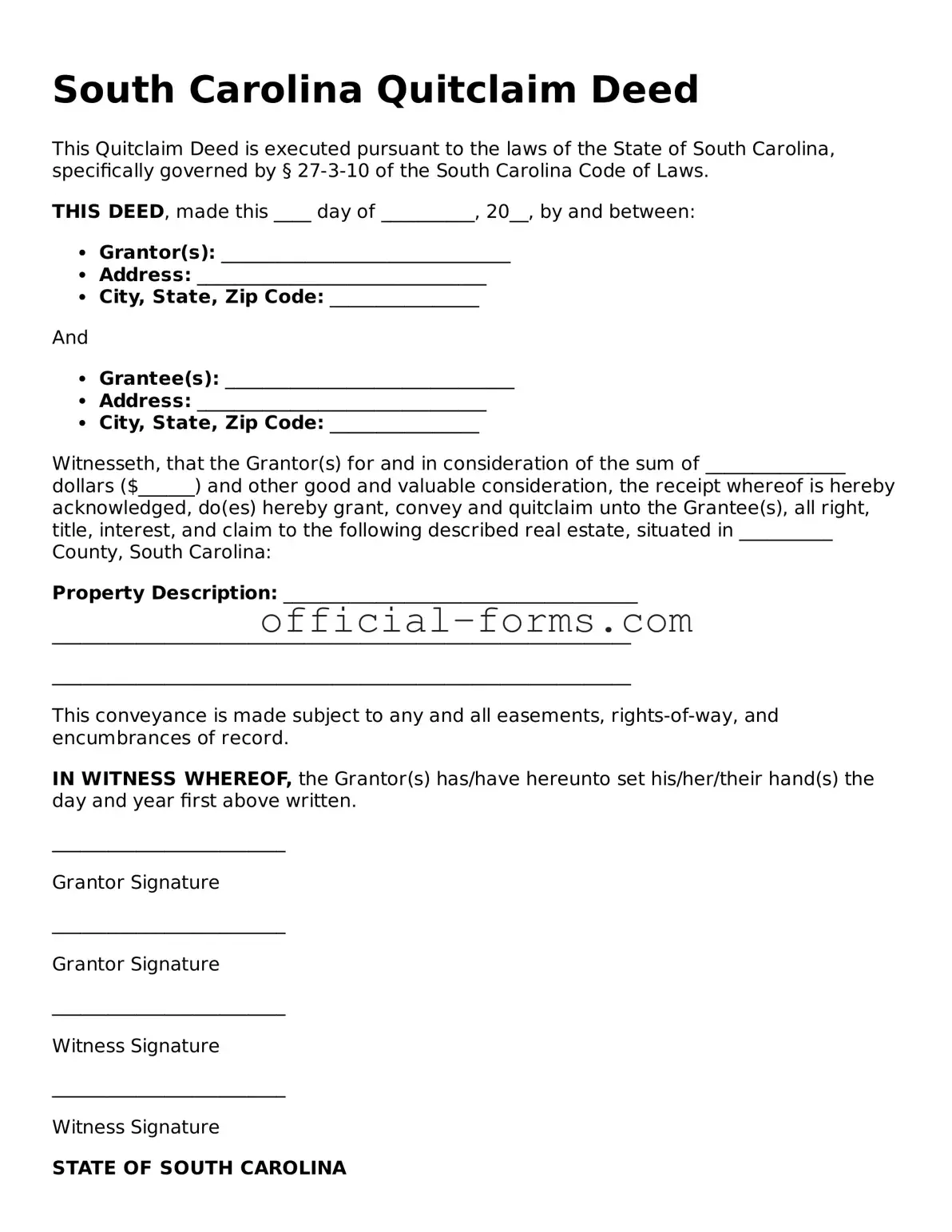The South Carolina Quitclaim Deed is an essential legal document used in real estate transactions, particularly when transferring property rights. This form allows an individual, known as the grantor, to relinquish any claim they may have on a property to another individual, the grantee. Unlike a warranty deed, a quitclaim deed does not guarantee that the grantor holds clear title to the property, nor does it provide any warranties about the property’s condition or encumbrances. This makes it a straightforward option for transferring property among family members or in situations where the parties trust one another. Typically, the quitclaim deed must include specific details, such as the names of the parties involved, a legal description of the property, and the date of transfer. Additionally, the document should be signed by the grantor in the presence of a notary public to ensure its validity. While the quitclaim deed is often used for informal transfers, understanding its implications is crucial for anyone involved in property transactions in South Carolina.
